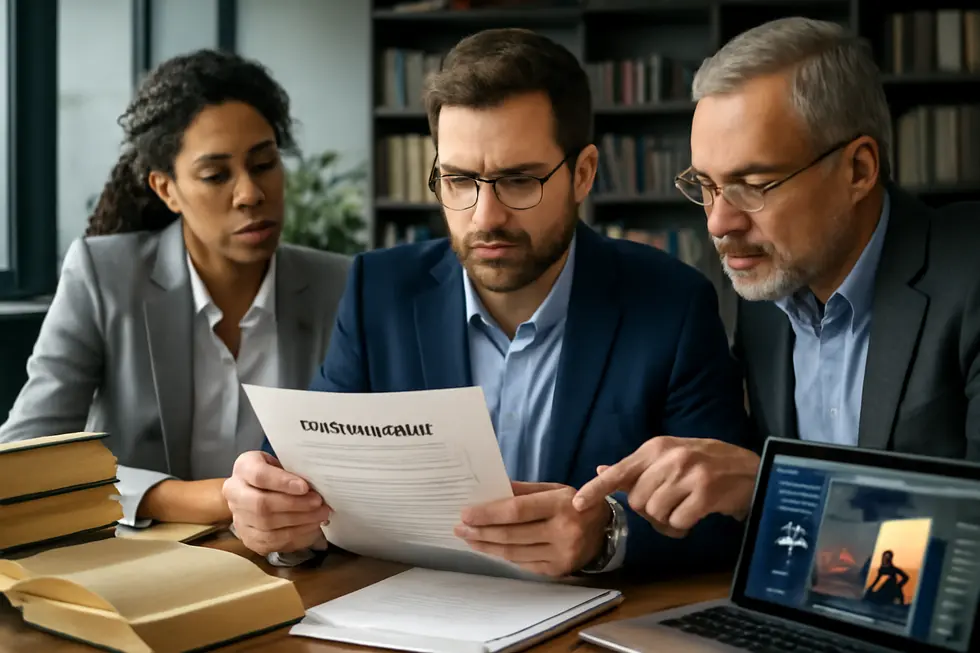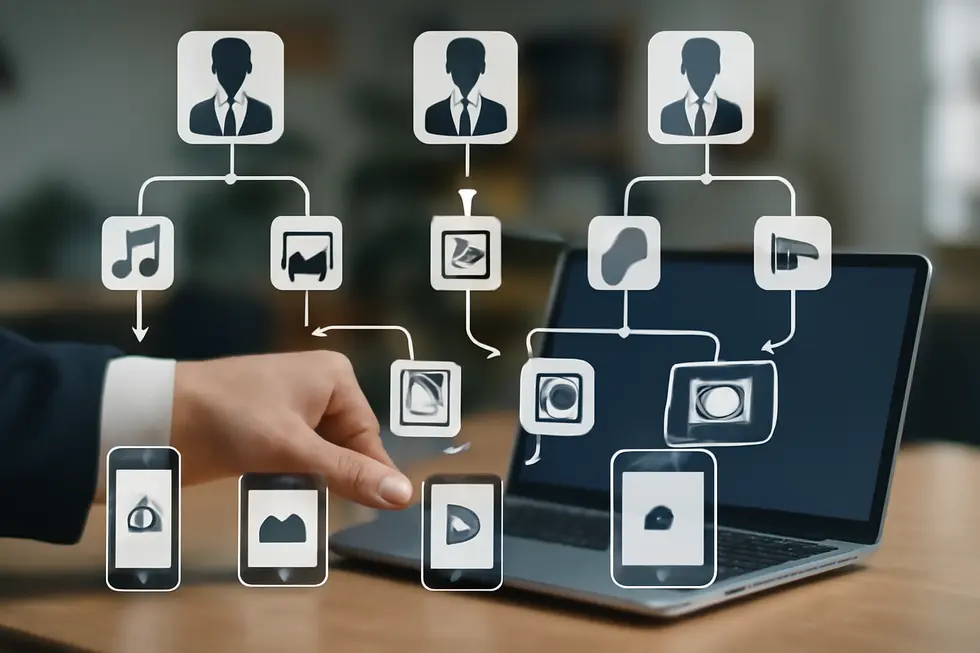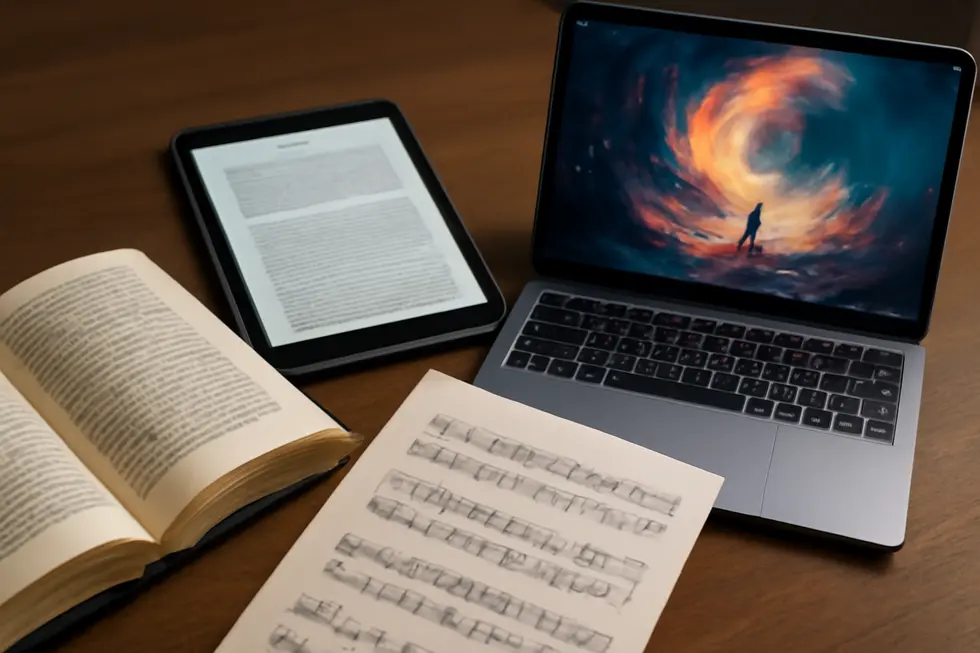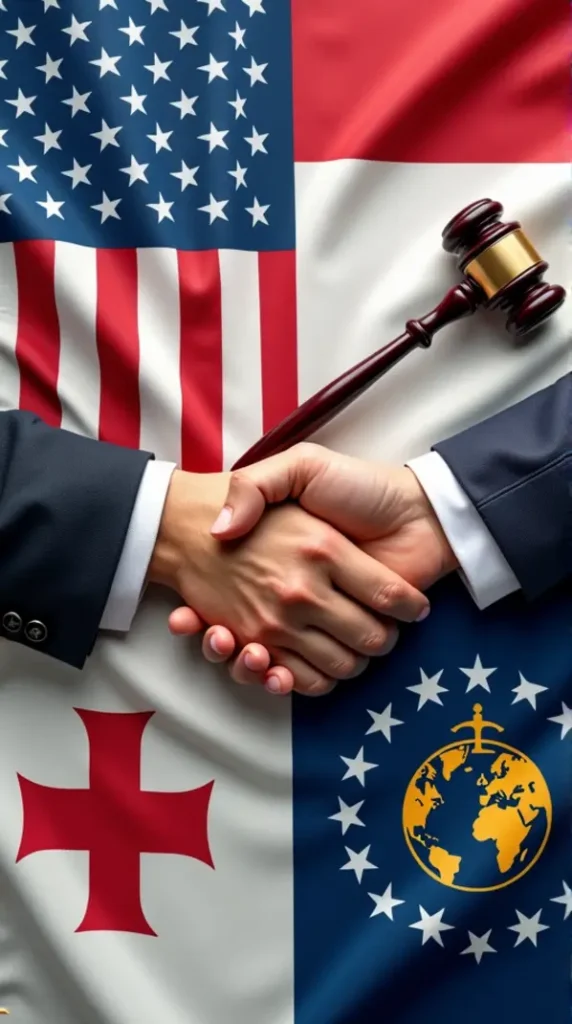Introduction
The copyright distribution right is a critical lever for business owners looking to manage and monetize their intellectual property effectively. This right grants copyright holders exclusive authority over how copies of their creative works are disseminated to the public, impacting sales, licensing, and market reach. For businesses, mastering the intricacies of this right can mean the difference between optimized profit streams and costly legal pitfalls. The following chapters unpack the exclusive nature and scope of these rights, explore transfer and licensing options, and highlight practical implications in publishing contracts and various creative industries. By grasping these elements, business owners can forge robust strategies to protect, distribute, and capitalize on their content in a globally connected marketplace.
Tables of Contents
Chapter 1: Exclusive Nature and Rights Scope of Copyright Distribution Right
- Territorial and Temporal Dimensions Defining the Legal Exclusivity of Distribution Rights
- Navigating the Limits of Exclusivity: The Roles of Fair Use and Licensing in Distribution Rights
- Navigating Digital Distribution: Technological Controls and Societal Impact of Copyright’s Exclusive Distribution Right
Chapter 2: Comprehensive Legal and Contractual Dynamics in Transferring and Licensing Copyright Distribution Rights
- Navigating the Legal Framework and Contractual Nuances of Copyright Distribution Right Transfer and Licensing
- Navigating the Economic and Technological Dimensions of Distribution Right Transfers and Licenses
- Navigating Societal Influence and Geopolitical Challenges in Copyright Distribution Transfers
Chapter 3: Non-Exclusive Copyright Distribution Right and Its Implications
- Navigating the Digital Landscape: How Non-Exclusive Distribution Rights Shape Accessibility and Control
- Balancing Market Expansion and Control: Economic Dimensions of Non-Exclusive Copyright Distribution Rights
- Navigating Author Empowerment and Global Reach Through Non-Exclusive Distribution Rights
Chapter 4: Role of Copyright Distribution Right in Publishing Agreements
- Understanding the Scope and Nuances of Distribution Right Transfers in Publishing
- Strategic Management of Distribution Rights: Negotiating and Retaining Control in Publishing Contracts
- Balancing Commercial Control and Educational Access Through Distribution Rights in Publishing
Chapter 5: Applications of Copyright Distribution Right Across Different Creative Works
- Navigating the Reach of Copyright Distribution Right in Literary and Artistic Creations
- Navigating Distribution Rights: How Musical Compositions and Sound Recordings Shape Copyright Control
- Navigating Distribution Rights in Dramatic and Audiovisual Creations: Control and Commercialization
Chapter 1: Exclusive Nature and Rights Scope of Copyright Distribution Right

1. Territorial and Temporal Dimensions Defining the Legal Exclusivity of Distribution Rights
The copyright distribution right, firmly rooted in statutes such as 17 U.S.C. § 106, grants copyright holders an exclusive legal mechanism to control how copies of their works are disseminated to the public. This exclusivity means that only the copyright owner or their authorized licensees can permit distribution, establishing clear boundaries that protect creators from unauthorized exploitation. No third party may distribute copyrighted materials without explicit permission, or it constitutes infringement unless limited by exceptions like fair use. This legal foundation underpins the enforceability of contracts such as publication or copyright transfer agreements, through which authors often assign distribution rights, sometimes exclusively, limiting their own unilateral distribution powers.
Crucially, this exclusivity is geographically bounded. Copyright laws and distribution rights typically operate within national jurisdictions, reflecting the principle of territoriality. Although international agreements like the Berne Convention harmonize basic protections, they do not eliminate territorial limits; thus, distribution rights are licensed and enforced regionally. Licenses often explicitly define the geographic scope, granting rights for specific countries or areas, such as the United States or the European Union, to prevent unauthorized cross-border distribution. This territorial segmentation allows rights holders to tailor distribution strategies to different markets, respecting local legal frameworks.
Equally significant is the temporal limitation of distribution rights. Copyright protection endures for a finite period—commonly the life of the author plus seventy years in the U.S.—after which copyrighted works enter the public domain. Upon entry into the public domain, anyone may freely distribute the work without license or permission, marking a transition from exclusive control to public accessibility. This temporal framework ensures a balance, rewarding creators with exclusive rights for a substantial term while ultimately promoting the public good by allowing unrestricted use over time.
Together, these territorial and temporal controls form a structured legal system. They empower copyright holders with exclusive distribution authority within defined boundaries and periods, facilitating enforcement and licensing arrangements while promoting eventual public access. For deeper practical insights into how these exclusive rights function within copyright law, including distribution specifics, see basics of copyright law.
Additional statutory and treaty details can be found in foundational resources such as 17 U.S.C. § 106 and related international instruments.
2. Navigating the Limits of Exclusivity: The Roles of Fair Use and Licensing in Distribution Rights
Copyright distribution rights grant authors and copyright holders exclusive control over how their works are disseminated to the public, through sale, rental, or other transfer methods. This exclusivity empowers creators to decide who may distribute their works, protecting their economic and creative interests. However, this control is not absolute. Legal frameworks recognize important exceptions that balance exclusivity with public access and social benefit.
One of the most pivotal exceptions is fair use, a flexible doctrine permitting limited use of copyrighted material without explicit authorization. Fair use typically covers activities such as criticism, commentary, news reporting, education, and research, where sharing or reproducing a work serves broader societal interests. For instance, scholars may reproduce excerpts for academic study or educators may distribute materials in classrooms under fair use, provided this use does not undercut the market value or commercial potential of the original. This carve-out prevents monopolistic control from stifling knowledge dissemination and encourages cultural dialogue.
Beyond fair use, explicit licensing agreements offer another pathway to modulate exclusivity. Through carefully defined licenses, copyright holders can delegate distribution rights either exclusively or non-exclusively, often stipulating territories, formats, duration, and permitted uses. Licensing frameworks provide legal clarity and commercial flexibility, enabling rights holders to expand their work’s reach while retaining control over key terms. For example, a publisher may receive exclusive rights to distribute a book in certain regions, whereas a digital platform might hold a non-exclusive license to offer electronic copies.
Together, fair use and licensing carve out boundaries within the broad scope of the distribution right, ensuring creators’ control coexists with meaningful public access. This balance aligns incentives for creativity with social advancement, anchoring the copyright system in fairness and adaptability. For further guidance on structuring legal protections and rights management, see Copyright Protection for Books, Movies, and Songs.
[1]
3. Navigating Digital Distribution: Technological Controls and Societal Impact of Copyright’s Exclusive Distribution Right
The exclusive character of the copyright distribution right profoundly shapes digital content dissemination, intertwining technology with societal outcomes. At the core, copyright holders implement rigorous technological safeguards, notably Digital Rights Management (DRM) systems, to uphold their exclusive control in the digital realm. These systems encrypt files, enforce online verification, and restrict content use across devices, all designed to prevent unauthorized distribution in an environment where copying is effortless and instantaneous.
While DRM effectively safeguards creators’ interests, it raises complex challenges. Consumers often face restrictions limiting lawful uses such as multi-device playback or format shifting, which can hinder convenient access to purchased works. Proprietary DRM platforms also fragment the market, as compatibility issues emerge between different devices and services. Moreover, some enforcement mechanisms have sparked privacy and security concerns, illustrating ethical tensions in balancing protection against user rights.
Beyond technology, the exclusive distribution right influences cultural and educational access to digital works. Stringent enforcement can restrict the availability of teaching materials or limit cultural exchange, potentially curbing creativity and knowledge sharing. Conversely, these rights ensure creators receive fair compensation for digital distribution, a critical factor in sustaining creative industries. Emerging technological innovations like blockchain offer promising solutions by providing transparent ownership records and enabling automated royalty payments through smart contracts, enhancing trust and reducing piracy.
Legal frameworks embody this delicate balance. For example, anti-circumvention laws protect DRM while accommodating limitations like fair use, which preserves certain consumer freedoms for purposes such as education and criticism. This ongoing negotiation between protecting creators and enabling access continues to evolve alongside digital technologies and societal expectations.
Overall, the exclusive distribution right in digital contexts demands a nuanced approach that leverages technology and law to protect rights holders without unduly restricting lawful use and cultural enrichment. For a deeper understanding of copyright protections in diverse creative industries, see more about copyright protection for books, movies, and songs.
External reference: U.S. Digital Millennium Copyright Act (DMCA) statutory texts and critiques [4].
Chapter 2: Comprehensive Legal and Contractual Dynamics in Transferring and Licensing Copyright Distribution Rights

1. Navigating the Legal Framework and Contractual Nuances of Copyright Distribution Right Transfer and Licensing
The transferability and licensing of copyright distribution rights are governed by detailed legal principles that define how copyright holders share, delegate, or retain control over the dissemination of their works. While copyright inherently confers exclusive rights—including reproduction, distribution, and public performance—these rights can be strategically managed through contracts: either fully transferring ownership or granting permission for use under specified terms. A transfer, or assignment, entails a formal, often written agreement where the copyright owner relinquishes all or part of their ownership to another party. This shift grants the transferee control over the distribution right within defined parameters such as duration and territory. Licensing, conversely, preserves ownership with the original copyright holder, allowing others to exploit the distribution right either exclusively or non-exclusively, without permanent ownership changes. Licensing contracts articulate the scope of rights conveyed, geographic limitations, formats permitted (digital, print, audio), the allotted timeframe, and financial arrangements typically involving royalties. Such contractual precision ensures proper remuneration and clarity of authority. Notably, U.S. copyright law incorporates statutory termination rights, providing authors a chance to reclaim transferred copyrights after 35 years, subject to procedural requirements—an important mechanism balancing creators’ interests with commercial exploitation. These nuanced frameworks empower authors and rights holders to tailor distribution strategies that align with business goals and market reach, while securing legal protections and economic returns. For guidance on copyright’s foundational rights and protections in the commercial realm, the resource on copyright protection for books, movies, and songs offers valuable insights. Further authoritative information on the termination and licensing aspects can be found through the U.S. Copyright Office, which elaborates on contractual formalities and reversion rights.
2. Navigating the Economic and Technological Dimensions of Distribution Right Transfers and Licenses
The transfer and licensing of copyright distribution rights embody complex economic and technological dynamics essential to modern intellectual property management. A copyright assignment represents a full legal transfer of ownership, granting the assignee exclusive control over key exploitation rights. This mechanism enables rights holders to monetize their creations outright through sale or transfer, consolidating economic benefits. However, such assignments may pose challenges, including restricting future creative uses or complicating moral rights protections, as the original creator relinquishes control over the work’s distribution entirely.
Conversely, licensing offers a more flexible approach by permitting usage rights without surrendering ownership. Licenses—whether exclusive or non-exclusive—define the scope, duration, and geographic reach of distribution permissions, allowing rights holders to tailor arrangements to market demands. This flexibility supports wider dissemination across multiple platforms or regions simultaneously while preserving ongoing revenue flows through royalties. Licensing contracts frequently incorporate conditions like limiting sublicensing or maintaining copyright notices to ensure proper attribution.
Technologically, advancements such as blockchain and AI are revolutionizing how distribution rights are managed and enforced. These tools enhance transparency by securely recording license terms, automating compliance checks, and enabling real-time monitoring of content usage and royalty payments. Digital globalization further necessitates adaptable licensing frameworks that accommodate multiple legal regimes and diverse digital marketplaces, encouraging interoperability among licensors, distributors, and platforms.
Economically, the interplay of assignments and licenses influences market access and innovation. Assignments often result in concentrated control and potential monopolistic effects, while licensing fosters competitive markets by enabling multiple distributors. Dynamic licensing models, informed by data analytics, allow rights holders to adjust royalty rates and licensing conditions in response to consumer demand trends, optimizing revenue without resisting broader accessibility.
Understanding these complementary yet distinct mechanisms clarifies how copyright holders can strategically balance control, income, and dissemination efficiency in an evolving technological landscape. For a detailed analysis of licensing terms, consulting sample contractual frameworks such as those found in Law Insider’s License Grant Clauses offers practical insight into structuring effective licenses that align with these economic and technological realities.
3. Navigating Societal Influence and Geopolitical Challenges in Copyright Distribution Transfers
Copyright distribution rights form the backbone of how creative works circulate legally, yet the chosen mode of transfer—whether assignment or licensing—carries profound societal and geopolitical consequences. A copyright assignment formally transfers ownership rights through a clear legal agreement that must specify the copyrighted work and respect moral rights alongside economic interests. This transfer consolidates power over distribution into one entity, potentially limiting public accessibility and cultural diffusion but ensuring tighter control and monetization avenues for rights holders.
On the other hand, licensing offers a flexible approach by granting permission to use or distribute works without relinquishing ownership. Licenses vary widely: they can be exclusive or non-exclusive, geographically bounded, and restricted by time or usage scope. Such specificity helps balance creator rights with the public’s need for access, encouraging innovation and wider dissemination. For example, software licenses might mandate retention of attribution while allowing modifications, nurturing collaborative development without surrendering core ownership.
The societal impact of these legal mechanisms lies in their influence over innovation diffusion and cultural sharing. While assignments might centralize control in a few hands, restricting diversity and access, well-crafted licensing strategies facilitate broader availability while safeguarding creators’ stakes.
Globally, these transfer and licensing regimes intersect with geopolitical realities, especially regarding intellectual property inequities between the Global North and South. Efforts in regions like Africa highlight struggles for pharmaceutical sovereignty, regulatory autonomy, and ethical governance—challenging restrictive IP norms entrenched in international frameworks. These dynamics underscore the role of copyright distribution rights in shaping technological autonomy, equity in partnerships, and ethical standards amid emerging complexities such as AI and data governance.
Understanding how transferability and licensing intertwine with societal and geopolitical spheres is crucial for crafting equitable, effective copyright strategies. This interplay both shapes market forces and nurtures ethical considerations necessary for fostering balanced cultural and technological progress.
For further exploration of licensing terms and legal nuances, consult detailed examples on license grant clauses here, and review comprehensive assignment guidelines to ensure compliance with pertinent laws here.
Chapter 3: Non-Exclusive Copyright Distribution Right and Its Implications

1. Navigating the Digital Landscape: How Non-Exclusive Distribution Rights Shape Accessibility and Control
The non-exclusive copyright distribution right fundamentally transforms how creators manage and disseminate their works in the digital age. Unlike exclusive arrangements, this right enables multiple platforms or parties to simultaneously distribute a copyrighted work, allowing creators to maximize reach without relinquishing sole control. This multiplicity fosters an ecosystem where works can appear across a variety of digital repositories, streaming services, and marketplaces, broadening visibility and accessibility to diverse, global audiences.
Such widespread accessibility is particularly vital for open access initiatives and digital content marketing, where the barrier-free distribution of knowledge or creativity amplifies impact and audience engagement. The flexibility inherent in non-exclusive licenses permits the copyright holder to continue direct distribution or license additional parties, balancing commercial opportunity with broader dissemination goals. However, this diffusion of distribution channels introduces challenges in maintaining consistent branding, quality assurance, and effective enforcement, as control becomes more distributed across licensees.
Technological advances enhance the suitability of non-exclusive rights for digital content, given the ease of duplicating and distributing works at scale. This model supports experimental marketing strategies, varied revenue streams, and risk mitigation by avoiding dependency on a single distributor. Still, managing multiple licenses demands meticulous administrative oversight and prudent partner selection to protect the integrity of the work and the creator’s reputation.
Overall, the non-exclusive distribution right leverages technology to extend a work’s availability while preserving creator autonomy. It requires balancing the benefits of broad digital dissemination with the practicalities of maintaining coherent control over how the creative property is experienced and monetized. For a deeper understanding of foundational copyright protections and related rights, see this detailed overview on copyright protection for books, movies, and songs.
(Reference: Elizabeth City State University’s scholarly guide on non-exclusive distribution rights and licensing models from PatentPC)
2. Balancing Market Expansion and Control: Economic Dimensions of Non-Exclusive Copyright Distribution Rights
Granting non-exclusive copyright distribution rights empowers copyright holders to authorize multiple parties to disseminate their works simultaneously, dramatically amplifying market reach and revenue potential. Unlike exclusive rights that concentrate distribution control in one hands, non-exclusive licensing promotes wider accessibility, accelerating adoption across various markets, including fragmented and global digital domains. This multiplicity of distributors enables creators to tap into diverse audience segments concurrently, producing several royalty streams that optimize the economic payoff from their intellectual property.
Nevertheless, this expansive distribution framework carries the inherent risk of market saturation. When too many distributors flood a market with identical content, consumer demand may diminish due to the perceived loss of exclusivity, reducing sales and revenues for individual licensees. Such saturation can undermine the value of the work and challenge licensors seeking to maintain their brand’s prestige and pricing power.
To navigate these economic trade-offs, licensors often adopt strategic licensing measures. Standardized contractual terms—such as uniform royalty rates and clear field-of-use restrictions—are essential to maintain fairness and avoid legal conflicts, including antitrust concerns. By harmonizing conditions across all licensees, copyright holders foster a stable licensing environment that encourages competition without damaging the market’s overall health. This balance between open access and controlled dissemination helps sustain the creator’s economic interests while stimulating innovation and market growth.
Furthermore, non-exclusive rights avoid monopoly control over distribution, fostering vibrant competitive ecosystems that drive innovation and consumer choice. This dynamic is particularly crucial as emerging licensing sectors, like those involving AI training data, demand robust protection of distribution markets to preserve the sustainability of creative industries.
Ultimately, effective management of non-exclusive distribution rights requires a careful equilibrium between broad dissemination and economic control. This balance ensures that copyright holders can maximize income streams and market penetration while safeguarding the content’s long-term value and relevance.
For a detailed exploration of licensing considerations, see Legal Considerations for Licensing Copyrighted Content.
3. Navigating Author Empowerment and Global Reach Through Non-Exclusive Distribution Rights
The non-exclusive copyright distribution right fundamentally reshapes how authors control and disseminate their works. Unlike exclusive rights that grant a single distributor monopolistic control, non-exclusive rights allow authors to license multiple parties simultaneously while retaining ownership. This flexibility empowers authors to expand their audience reach by enabling their works to appear on various platforms, in diverse regions, and across cultural boundaries without forfeiting future licensing opportunities. Such a model aligns strongly with societal values promoting access to knowledge. By allowing multiple distributors, it naturally supports educational initiatives, open access projects, and cultural exchanges, fostering a broader public benefit through increased accessibility to creative and scholarly resources.
From a geopolitical standpoint, non-exclusive distribution rights facilitate international dialogue and cooperation. They circumvent the geographic and market restrictions often entrenched in exclusive agreements, allowing works to circulate homogeneously across different countries. This multiplies the opportunities for cross-cultural engagement and equitable sharing of intellectual property, which is vital in an interconnected global environment. However, this expansive reach does come with challenges. Multiple distributors introduce complexities in ensuring consistent quality control and maintaining coherent branding, which can affect the work’s reputation. Administratively, managing numerous licenses demands more resources and coordination. Additionally, the absence of exclusivity may dampen individual distributors’ incentives to invest heavily in marketing, potentially impacting the work’s visibility.
Despite these challenges, the non-exclusive distribution right supports a dynamic balance where authors retain significant control while embracing broad distribution possibilities. This balance reflects current trends in copyright that emphasize both author empowerment and public accessibility, crucial for fostering innovation and cultural exchange on a global scale. For authors seeking to understand how best to protect and share their work, resources on copyright protection provide further practical insights.
For a deeper exploration of the legal nuances and global impact of non-exclusive distribution rights, see this external resource.
Chapter 4: Role of Copyright Distribution Right in Publishing Agreements

1. Understanding the Scope and Nuances of Distribution Right Transfers in Publishing
The copyright distribution right plays a pivotal role in publishing agreements, defining how, where, and in what form a copyrighted work may be shared with the public. Within such contracts, this right often accompanies a broader package of intellectual property rights that authors may transfer or license to publishers. The scope of the distribution right is shaped by negotiations and typically specifies formats—whether physical copies, digital downloads, or other methods—and may delimit geographic territories or market segments where distribution is authorized. This flexibility allows publishers to tailor dissemination strategies, maximizing reach while respecting the author’s stipulations.
Authors face important decisions when granting these rights. A transfer, or assignment, conveys full ownership of the distribution right and potentially the entire copyright to the publisher. This means the publisher gains broad control and the author relinquishes these rights unless otherwise reserved. Alternatively, licensing allows the author to retain ownership while granting permission for specific uses, such as distribution within certain parameters. Partial transfers or unbundling of rights enable authors to retain some control—perhaps maintaining rights to use the work for teaching or self-promotion—while still enabling commercial publication.
Negotiations often focus on these nuances to balance the commercial and creative interests of both parties. For instance, authors may seek contractual addenda to safeguard certain uses or to stipulate limits on regions or languages covered. Notably, U.S. copyright law includes statutory protections such as the termination right under 17 U.S.C. § 203, empowering authors to reclaim transferred rights after 35 years. This provision offers long-term flexibility, allowing authors or their heirs to pursue new publishing avenues in the future.
Thus, the scope and transfer of distribution rights in publishing agreements involve complex considerations that require careful contractual drafting and strategic negotiation to uphold both authorial interests and effective dissemination. For more insight into typical contract arrangements and practical advice, the University of Michigan Scholarly Publishing Guide offers valuable resources. Additionally, understanding the foundational copyright protections for books, movies, and songs can provide helpful context when navigating these agreements.
2. Strategic Management of Distribution Rights: Negotiating and Retaining Control in Publishing Contracts
In publishing agreements, the negotiation and retention of copyright distribution rights are critical steps for authors aiming to maintain effective control over the dissemination of their work. Authors face the decision to either transfer full ownership of the distribution rights to the publisher or to grant licenses that limit the scope and exclusivity of use. Unlike outright transfers, licensing can be tailored—allowing authors to retain key rights, such as distribution, translation, or educational uses, by specifying non-exclusive permissions or reserving certain uses explicitly through contract language or addenda.
A pivotal aspect of these negotiations focuses on royalty arrangements and distribution parameters. Authors should carefully examine how royalties are calculated, often based on net receipts after discounts, and ensure contract clauses address geographic distribution territories and methods of dissemination. The ability to monitor and receive appropriate royalty payments can hinge on maintaining accurate and current contact information.
Contractual review and potential amendments are essential for authors to safeguard their interests. Standard publishing contracts tend to favor broad transfers, but authors can propose modifications that preserve critical rights, thus balancing dissemination opportunities with ongoing control. If initial terms are overly restrictive, authors must weigh the merits of further negotiation against seeking alternative publishing partners.
Importantly, statutory provisions such as the U.S. copyright law’s allowance for termination of transferred rights offer creators a long-term mechanism to regain control, typically after 35 years. This reinforces the strategic nature of retention and negotiation in publishing contexts.
Resources like the University of Michigan Scholarly Publishing guide and rights databases such as SHERPA/RoMEO provide valuable insights into publishers’ policies, assisting authors in crafting informed agreements.
For authors navigating the complexities of publishing, effectively managing distribution rights is a vital step to ensure their works reach audiences without ceding unnecessary control over future uses. More on copyright considerations in literary works can be found in our detailed copyright protection overview.
3. Balancing Commercial Control and Educational Access Through Distribution Rights in Publishing
The copyright distribution right plays a pivotal role in defining how creative works are disseminated within commercial and educational spheres under publishing agreements. When authors transfer this right to publishers, typically on an exclusive basis, publishers gain the authority to reproduce, distribute, and commercially exploit the work. This control enables publishers to monetize the work through sales, licensing, and sublicensing, effectively centralizing the economic benefits. As a result, authors often relinquish direct control over commercial uses of their creations unless they negotiate explicit retention clauses. This transfer can limit authors’ ability to independently publish or license their own work commercially.
In educational contexts, the distribution right’s impact tends to be more restrictive. Many standard publishing contracts narrowly limit authors’ ability to use their own works for teaching or electronic sharing without publisher consent. However, authors may negotiate to retain specific rights for non-commercial educational use, such as classroom distribution or inclusion in course materials. These negotiated rights can be preserved through addenda, ensuring that educational dissemination remains lawful and accessible. While statutory fair use exceptions exist, they typically cover only limited uses and cannot substitute for fully negotiated permissions, underscoring the importance of retaining educational rights where possible.
Although economic rights may transfer entirely to publishers, moral rights—such as the right of attribution and protection of the work’s integrity—generally remain with the author. These moral rights safeguard authors’ recognition but do not extend to permissions for distribution or reuse in commercial or educational settings.
Ultimately, the balance between commercial control and educational access hinges on the scope of the distribution right granted in publishing agreements. Authors who strategically negotiate retained rights can ensure broader educational availability while allowing publishers to manage commercial exploitation effectively. For further guidance on managing these rights within publishing, the University of Chicago Library provides valuable insights on author rights and publishing agreements. This balance is crucial in maintaining both the authors’ interests and the public’s access to knowledge.
Chapter 5: Applications of Copyright Distribution Right Across Different Creative Works

1. Navigating the Reach of Copyright Distribution Right in Literary and Artistic Creations
The copyright distribution right plays a vital role in enabling creators to govern how copies of their literary and artistic works circulate in the public domain. This exclusive right empowers authors, musicians, and visual artists alike to authorize or restrict the sale, rental, or lending of their materials, whether physical or digital, thus protecting their economic interests and creative control. In the realm of literary works—covering books, manuscripts, and scripts—the distribution right allows writers and publishers to regulate not only printed editions but also electronic copies, ensuring their works reach audiences under authorized conditions. Similarly, the music industry relies on this right to manage physical media such as CDs and vinyl, as well as digital downloads. Composers and performers use distribution rights to license their works to platforms and retailers, underpinning the monetization of their creative output. Artistic creations, including paintings, sculptures, photographs, and prints, also depend on distribution rights to control the sale and public lending of originals and reproductions. This ensures that artists maintain influence over how their works are shared, preserving both their market value and moral rights. While the distribution right is central to managing dissemination, it functions alongside other exclusive rights like reproduction, public performance, and public display, creating a robust framework of protection across diverse media. Nonetheless, these rights accommodate legal exceptions for purposes such as education and commentary, balancing creators’ prerogatives with public interest. This balanced approach is essential to enabling creators across literary and artistic fields to retain control over their works’ circulation while allowing socially beneficial access. For deeper insights into how copyright safeguards various creative forms, see Copyright | Britannica and explore related copyright protection strategies at copyright protection for books, movies, and songs.
2. Navigating Distribution Rights: How Musical Compositions and Sound Recordings Shape Copyright Control
In the musical and sound recording sectors, the copyright distribution right serves as a foundational tool that allows creators and rights holders to govern how their works reach the public. This right bifurcates into two distinct yet intertwined categories: musical compositions, which embody the lyrics, melodies, and written scores, and sound recordings, representing the fixed performances captured in audio formats. Typically, these categories have separate copyright owners whose rights overlap to cover all aspects of the creative output.
Distribution control in this sector encompasses regulating physical formats such as CDs and vinyl as well as digital sales and transfers. Mechanical licenses specifically manage reproduction and distribution of compositions on these physical or digital media. Meanwhile, synchronization licenses, often referred to as sync licenses, are essential when music combines with visual content—movies, advertisements, or online videos—requiring coordinated permission from both composition and sound recording rights holders if owned separately.
Public performance rights fall under the purview of performing rights organizations, which license uses like live concerts, radio broadcasts, and streaming services. This licensing infrastructure ensures that composers and publishers receive royalties from diverse public performances, reinforcing the distribution right’s role beyond mere copying or sale.
For sound recordings, copyright protections include reproduction, distribution, public performance, and derivative works. The sector confronts legal challenges such as sampling disputes where small audio segments are reused, testing the balance between protecting original rights and fostering creative transformation. Courts often differ on interpreting these exceptions, highlighting the ongoing tension within distribution rights enforcement.
Through this multi-layered framework, copyright owners secure various revenue streams while safeguarding their works against unauthorized dissemination. This complexity in the distribution right within musical works underscores the nuanced relationship between creators, intermediaries, and consumers amid evolving industry practices and technology.
For a comprehensive view on mechanical and performance royalties specific to these sectors, see Chapman University’s detailed guide on performing arts copyrights [5].
3. Navigating Distribution Rights in Dramatic and Audiovisual Creations: Control and Commercialization
Copyright distribution rights play a crucial role in managing the dissemination of dramatic and audiovisual works, safeguarding creators’ control over their scripts, performances, films, and broadcasts. These rights enable copyright holders to regulate how their creative products reach audiences through sales, rentals, or digital streaming, ensuring they can effectively monetize and protect their content across diverse platforms.
In the realm of dramatic works—encompassing plays, operas, musicals, and related performances—the distribution right extends beyond just the text or script. It includes the license to distribute associated music scores, choreography recordings, and multimedia adaptations. The complex layering of rights in such works reflects their multidisciplinary nature, requiring tailored licensing agreements to address the unique combination of literary and musical elements. This ensures that any public distribution, be it physical or digital, is properly authorized, preserving both commercial value and artistic integrity.
When it comes to audiovisual media, including films, television shows, and streaming videos, the distribution right is integral to controlling the public availability of copies or digital files. Copyright holders typically negotiate licenses specifying where and how the work can be disseminated, covering geographic territories, distribution channels, and periods of use. This flexibility allows adaptation to changing technologies and market demands, such as shifting from theatrical releases to digital platforms. It also provides essential protection against unauthorized uses like piracy and unlicensed streaming, which threaten the economic interests of creators and distributors.
Moreover, the distribution right often intertwines with rights over derivative works and adaptations. This ensures that creators benefit when their original dramatic or audiovisual work is transformed, remixed, or publicly exploited in new formats. While exceptions like fair use may permit limited non-commercial use, these are carefully evaluated to avoid undermining the original work’s market potential.
For a deeper understanding of licensing and copyright in these media, resources such as performing arts copyright guides and specialized university libraries offer detailed, practical guidance. By exercising their distribution rights wisely, creators and rights holders maintain both the artistic and economic vitality of their dramatic and audiovisual productions.
For more comprehensive insights on copyright protections as they relate to films and songs, see this detailed copyright protection overview.
Additional information on licensing and fair use can be found at performing arts-focused copyright resources.
Final thoughts
Navigating the copyright distribution right is indispensable for business owners aiming to effectively manage, protect, and profit from their intellectual property. This right’s exclusivity, transferability, and licensing flexibility provide strategic levers to control how creative works reach the public. Whether through exclusive contracts, non-exclusive licenses, or territorial segmentation, businesses can customize distribution to fit market demands and maximize revenue. The essential role this right plays in publishing agreements and across diverse creative industries further highlights its broad applicability and significance. Mastery of these concepts safeguards your creative assets, enabling sustainable business growth and competitive advantage in today’s dynamic marketplace.
Get your trademark today! Thousands have protected their brand by filing a trademark. What are you waiting for? Start your trademark application!
About us
The globe’s top website for registering trademarks and safeguarding your brand, name, logo, or slogan. We provide a seamless, expert-driven platform that empowers business owners to secure their intellectual property efficiently and confidently.





